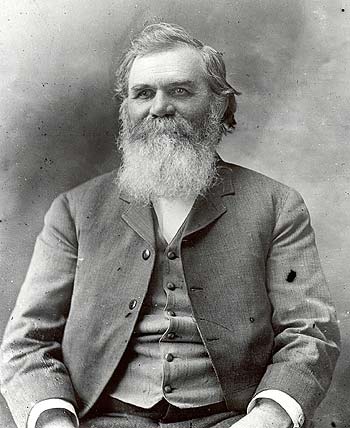
D.D. Palmer, the father of chiropractic, died in 1913. Over a century later, his ideas have never been properly tested with placebo controls – until now.
The research on chiropractic has been far from rigorous. One of the problems is that studies of spinal manipulation therapy (SMT) can’t be double blinded, and it is very difficult to even do single blinding. So most studies resort to non-manipulation control groups like “usual care” or “wait list” or “pain medication.” Those studies are practically guaranteed to lead to false positive conclusions: they make SMT look more effective than it would look if you could provide a control that patients couldn’t distinguish from real SMT.
In a study just published in the European Journal of Neurology, Chaibi et al. successfully used a credible placebo manipulation on patients with migraine. It showed that SMT doesn’t work for migraine, but that’s not news. The news is that it showed how to improve the methodology of SMT studies to get more reliable results.
The study design
It was a prospective three-armed, single-blinded randomized controlled trial (RCT) conducted at a university hospital in Norway. 104 patients who had at least one migraine attack per month were studied over a period of 17 months. The control group continued with their usual pharmacological management, the active treatment group got SMT, and the placebo group got “a sham push maneuver of the lateral edge of the scapula and/or the gluteal region.” I would have thought patients could tell the difference, but they couldn’t. The blinding was successful. They did an “exit poll” after each intervention session, and more than 80% of subjects in both the active treatment and the placebo treatment groups believed they had received SMT.
The results
The number of days with migraine were significantly reduced in all three groups. This is not surprising, because doing anything, even just enrolling patients in a study, usually results in improvement; that’s why we have to use control groups. Initially there was no difference between the three groups. The effect continued in the SMT and placebo groups during follow-up, while it returned to baseline in the usual-care control group. They looked at several secondary outcomes and found some small differences, but they didn’t draw any conclusions from that data. They concluded that the effects in both the SMT and the placebo manipulation groups were “probably a placebo response.”
Adverse effects
Adverse effects were significantly more frequent in the SMT group than in the placebo manipulation group. The most commonly reported ones were local tenderness and tiredness. Fewer than 1% of patients reported other effects including lower back pain, face numbness, nausea, provoked migraine attack, and fatigue in arms. No severe or serious adverse effects were reported. If the patients got neck manipulations, face numbness and nausea might have been worrisome red flags indicating possible vertebral artery dissection and impending stroke.
Why the Gonstead method?
The SMT group was treated with the Gonstead method, with high-velocity, low-amplitude thrusts “directed to spinal biomechanical dysfunction (full spine approach) as diagnosed by standard chiropractic tests at each individual treatment session.” They did not say what those standard chiropractic tests were. According to skeptical chiropractor Sam Homola, those “standard chiropractic tests” are not reliable, and they are meant to diagnose mythical “subluxations.” Why Gonstead? Homola commented, “I cannot imagine why a scientific study would rely upon an entrepreneurial chiropractic treatment method rather than upon generic spinal manipulation.”
The authors did not reveal what parts of the spine were manipulated. Gonstead includes adjustments of the cervical spine, and any benefits of neck manipulation (placebo or otherwise) must be balanced against possible risk of a rare but catastrophic complication: stroke or death.
Can chiropractors relieve migraine?
The authors of this study call it “chiropractic” spinal manipulation therapy (CSMT), and Gonstead is indeed a chiropractic technique. But generic spinal manipulation is not specifically chiropractic; it is also used by DOs and physical therapists. The evidence for the effectiveness of “chiropractic” or SMT for migraine is mixed. Considering the flaws of the positive studies (notably the absence of a credible placebo control group) and the results of this new study, I think it is reasonable to conclude that chiropractic and/or SMT have little or no role to play in the treatment of migraine.
I asked Sam Homola, and here’s what he said:
In my own experience as a chiropractor, I felt that a patient in the throes of a migraine headache got more immediate relief from medication than from any kind of physical treatment. Although spinal manipulation can have some neurophysiological effects, I was never able to determine that manipulating the spine or correcting a subluxation was an effective treatment for a migraine that might be caused by an imbalance in brain chemicals.
Conclusion: a valuable study with two lessons
Lessons learned: (1) don’t use SMT for migraine (2) do use proper placebo controls for research.
The authors state that to their knowledge, this is the first manual-therapy RCT with a documented successful blinding. It’s about time! Any future research on manual therapies should incorporate the kind of sham manipulations, blinding, and verification of successful blinding that these researchers used.
The chiropractic subluxation is a myth. It’s appalling that many chiropractors still endorse D. D. Palmer’s obsolete belief system in the 21st century.

